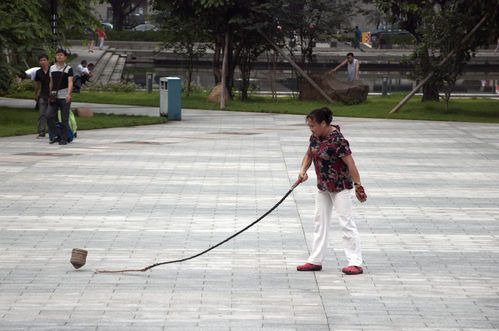The following story appeared in the July-August issue of Metro Magazine. As Metro has no online archive of its articles, they have kindly granted permission for me to reproduce my story here.
Guangzhou is the biggest city you never knew existed. Even if you do know it exists, you might not know it’s one of the biggest – 9th in the world, with a population of nearly 12 million people. Including the greater city area along the Pearl River Delta, and the number is more than double that. In those terms, it is second only to Tokyo as the world’s biggest agglomeration.
It’s not the sexiest city in the world. It doesn’t have the romance of Paris, the history of Rome, the spirit of Rio or the dirty credibility of New York. It’s not even the sexiest city in China; that title goes to Shanghai, which fancies itself the New York of the East. Shanghai, by the way, is the world’s biggest city proper, and has the skyline to match. Not that Guangzhou isn’t trying – the massive Pearl River flows through the heart of the city, and after sunset the buildings shine with more multi-coloured lights than a Nissan Skyline cruising down K’ Road on a Friday night. Even so, you’d struggle to say it’s a pretty city. The streets are kept remarkably clean of litter, while the sky is hazy with pollution.
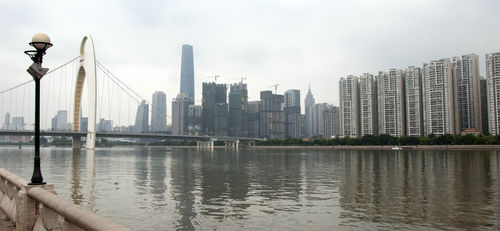
Pearl River
But you don’t come to Guangzhou for the sights, you come to trade; to buy, to sell, to produce. Guangzhou is the economic powerhouse of the People’s Republic. If decisions are made in Beijing, and the money banked in Shanghai, then Guangzhou is where things get made. Formerly known as Canton, it’s been a major manufacturing and trading hub of China for hundreds of years, and it’s showing no sign of slowing down. In 2005 its GDP was roughly the same as New Zealand’s. Today it’s twice that.
Jeremy Maclaurin has been coming to Guangzhou for the past six years to oversee his fashion manufacturing business, including local labels NVAH and neverblack. Living in Havelock North but making the journey half a dozen times a year, in February Maclaurin decided to stop being a visitor from the Hawkes Bay, and relocate permanently.
As we drive towards his 3 bedroom/2 bathroom apartment – worth a million or more to buy, but a steal at just NZ$1100 or so a month to rent – Maclaurin points to the huge residential buildings surrounding his. There are, he says, some 200,000 people living within a couple of city blocks, and by the end of the year, 5.2 million people will be living in the ‘suburb’ of Zhujiang New Town. Just seven years ago, those buildings weren’t there.
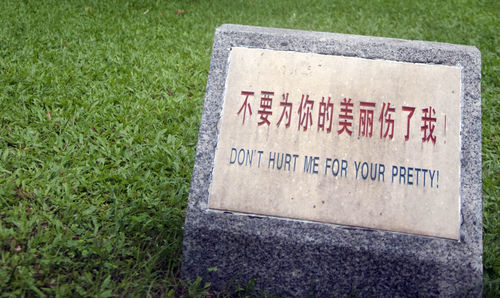 In Guangzhou, most numbers quoted seem to have a bunch of zeroes after them, and they’re thrown around with impunity. At Zuru Toys, Anna Mowbray has orders for millions of tiny, water-activated robotic fish, destined to be the impulse craze of Christmas 2012. On another floor, an order of 500,000 boomerangs is being cut from blue foam; outside, a massive skip is piled with the foam outlines of where boomerangs once stood. You don’t exactly have to be Captain Planet to realise this is less than ideal, but somtimes I guess the world just needs more blue foam boomerangs.
In Guangzhou, most numbers quoted seem to have a bunch of zeroes after them, and they’re thrown around with impunity. At Zuru Toys, Anna Mowbray has orders for millions of tiny, water-activated robotic fish, destined to be the impulse craze of Christmas 2012. On another floor, an order of 500,000 boomerangs is being cut from blue foam; outside, a massive skip is piled with the foam outlines of where boomerangs once stood. You don’t exactly have to be Captain Planet to realise this is less than ideal, but somtimes I guess the world just needs more blue foam boomerangs.
Anna Mowbray says her friends at home share a common misconception: “I do believe they think we’re all running sweatshops.” But touring Zuru Toys HQ, an hour from central Guangzhou, while I’m doing a great impression of the incredible melting man in the 35 degree heat with what feels like 110% humidity, I don’t see any evidence of that.
“There’s a huge distance between people’s perceptions of China and the reality,” says Maclaurin. “Those days [of sweatshops] are far gone. A big part of that was factories had to start meeting standards for their export markets, then new labour laws were introduced a few years ago, and so there’s minimum wages, social security, health insurance and things like that.”
Yes, China has minimum wages – in Guangzhou it’s about NZ$220 a month. But factories over a certain size (25-30 workers) are also expected to be responsible for food and accommodation. The latter is particularly important as most of the factory workers don’t live down the road with their families, they come from remote villages, hundreds or thousands of miles away, and live in accommodation which is usually part of the factory complex. They send most of their wages back home, and twice a year make the long arduous journey back to their villages. It’s as often as Mowbray returns to her family home in Cambridge, which she left seven years ago.
Sure, the factory jobs are repetitive, menial. No-one seems to be having a great time working the machinery, but I’ve seen a few production lines in New Zealand, even worked on a couple, and never thought anyone was having a ball. However I couldn’t help thinking that the guy whose job it was to test-fire a volley from each massive fluorescent green foam pellet gun didn’t realise he had the best job on the whole conveyor belt.
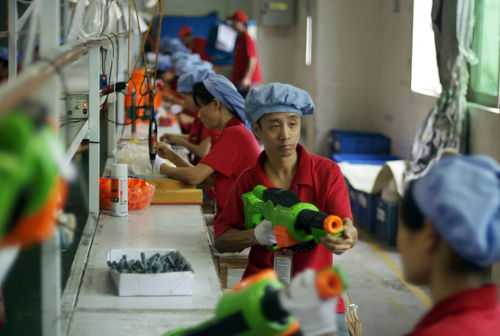
Production line, Zuru Toys
The irony of Guangzhou is that while many major multinationals use it as a production base, it is also a primary source of one of their biggest headaches – knockoffs. At the Hu Mai markets, just one example of hundreds, canny shoppers can experience an entire street of multi-storey buildings and bustling alleys, each crammed with stall after stall of such merchandise. Forget cheap imitation Lacoste and Ralph Lauren polo shirts; what’s on offer here are high quality replicas of the latest season fashions, from all the usual big brands, but also niche, high-fashion labels – even Karen Walker sunglasses make an appearance. Worringly, at least for those hoping to protect their IP, this isn’t a consumer market – most stalls won’t sell you a single pair of Adidas limited edition trainers – you’ll have to take a hundred, minimum. Easily spotted among the Chinese, a large number of Africans populate the markets, deep in negotiation with the stallholders, ordering 500 of this, a thousand of that, destined mostly for South Africa.
Jeremy Maclaurin tells me of a woman he met with a Louis Vuitton store, who admitted one in every four bags she sold was from these markets – her way of keeping the margins up. If the customers can’t tell the replica from the real deal, it does start to raise some big picture questions about the value we place on a brand, but that’s another story. I wonder, as a designer himself, whether Maclaurin is bothered by the knowledge that his designs, or those of his clients, might end up on these shelves alongside the Paul Smith shirts, the Nudie Jeans. However he seems to have taken to heart the old adage about having the serenity to know when he can’t change something. It’s just one more cost of doing business in China.
Corruption is an obvious question from a Western journalist, but again, it seems more of an accepted - if officially frowned upon - cost of doing business. “It’s more about building relationships,” says Maclaurin, “so if you know the right people then things can happen a lot quicker than if you don’t go down that channel. But when you’re doing due dilligence on a business, you always factor in a certain amount for that.”
Logan Komoroski, a furniture designer who made the move from Auckland about the same time as Anna Mowbray, points out it’s perfectly acceptable to include these under-the-table payments as a business expense in the monthly accounts, and that as soon as the necessary backhanders are made, things happen very quickly indeed.
And there’s certainly no lack of opportunities. Talking with the three early thirty-something expats, the number of side-projects and potential new businesses is as overwhelming as it is inspiring. All speak of the lack of red-tape compared with doing business back home. “It was just becoming harder and harder,” says Komoroski, who now produces furniture for countries worldwide, and increasingly, the Chinese domestic market. He also has side projects transforming shipping containers into retail and living spaces, and waterfront property development in the nearby Philippines, both from contacts made in Guangzhou. Business is never far from the mind in Guangzhou, neatly illustrated as Komoroski, with an impressive grasp of Mandarin, tries to poach the waitress delivering our drinks. “It’s getting hard to find salespeople who speak good English,” he explains. The waitress takes his card, laughing nervously, not sure whether she is the butt of some expat joke.
“I think China sees any new business as a good thing for the country as a whole, so they try and make it as easy as possible,” says Maclaurin. “Here nothing seems to be a problem, so you can look at a number of projects within a year – some eventuate, some don’t – but at least you have that opportunity.”
 And therein lies the paradox, at least from the outsiders’ point of view. It’s the last giant bastion of Communism, and yet Komoroski says he’s “never lived in a place as free.” Which is not to say the Communist Party does not make its presence occasionally felt. Sitting in my hotel room, I’m unable to access Facebook or Twitter. Yet as I’m being blocked, Anderson Cooper is on CNN, broadcasting the first major interview with the blind dissident Chen Guangcheng, who escaped house arrest and is now living in the US. As the broadcast goes out, Cooper points to the CNN feed as it appears in China, almost goading the authorities to shut it down. They don’t.
And therein lies the paradox, at least from the outsiders’ point of view. It’s the last giant bastion of Communism, and yet Komoroski says he’s “never lived in a place as free.” Which is not to say the Communist Party does not make its presence occasionally felt. Sitting in my hotel room, I’m unable to access Facebook or Twitter. Yet as I’m being blocked, Anderson Cooper is on CNN, broadcasting the first major interview with the blind dissident Chen Guangcheng, who escaped house arrest and is now living in the US. As the broadcast goes out, Cooper points to the CNN feed as it appears in China, almost goading the authorities to shut it down. They don’t.
Central planning certainly works when it comes to getting things done. Guangzhou hosted the 16th Asian Games in 2010, and saw more than NZ$3 billion invested in beautification, new sports venues, and improving the transport network, including high speed rail. The architecturally impressive Leide Bridge and Canton Tower were also opened for the Games – at 600 metres, the latter is the third tallest structure in the world, although this is the sort of fact that’s almost out of date as soon as it’s written down.
Even failed developments in Guangzhou are on a massive scale. Across the road from my hotel sits a the massive hulking shell of a skyscraper, easily 50 storeys high, started but destined to never be finished. Meanwhile new buildings go up, and old buildings come down, the replacements always bigger, bolder, and more luminous than their predecessors. For an ancient trading city – Guangzhou had direct routes to the Middle East as far back as the 8th Century – there is little sign of its heritage.
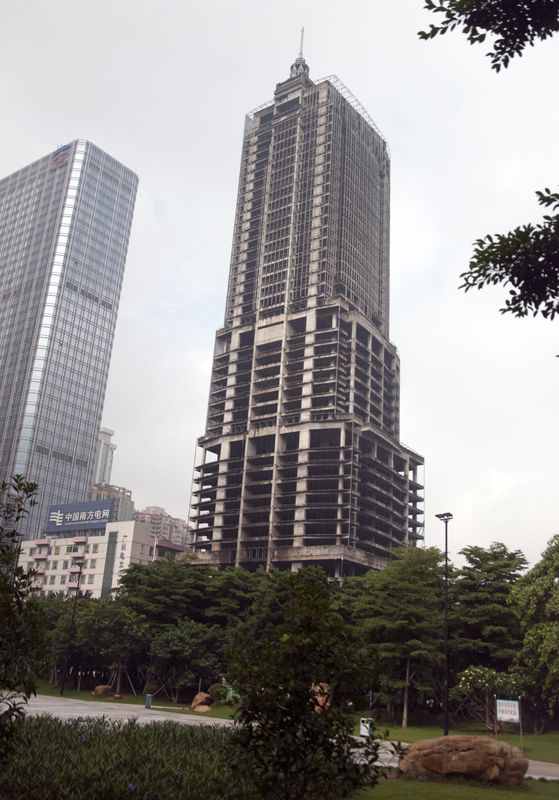
An abandoned skyscraper
But this is not peculiar to Guangzhou, nor is it a remnant of the cleansing of Mao’s Cultural Revolution – the Chinese culture simply places no value on old buildings. Or more correctly, as the French explorer and poet Victor Seaglen noted upon visiting China a century ago, rather than adopting the futile Western approach of battling the erosion of its architecture, the Chinese positively embrace it, with built-in obsolescence. How Zen.
But it’s not just Guangzhou’s facade that’s changing. As much as it might seem like a bold new frontier town of capitalism and opportunity to me, Jeremy Maclaurin says he and his fellow expats feel like they’ve almost arrived too late – “if we’d been here five or ten years earlier, we’d have really been on the ball.” While the rise of the Chinese middle class has meant an exponential boom in domestic demand, and it’s harder to find people willing to work in factories.
China’s one-child policy also means many young Chinese are the sole beneficiary of two parents’ and four grandparents’ hard work, further relieving the urge to toil themselves. In Guangzhou, living costs, labour costs and real estate prices are all rising, driving manufacturing further away. Maclaurin is already beginning to invest in factories in Cambodia and Vietnam.
As unlikely as it might seem in the midst of still massive growth, if this trend continues it’s possible Guangzhou will one day lose its industrial foundations. The factories will empty, and without a purpose, the city will grind slowly to a halt, a victim of its own success. And just like every building that once stood there, the city of Guangzhou will embrace its own obsolescence. But not anytime soon.
Damian Christie travelled to Guangzhou with the help of the Asia New Zealand Foundation.
